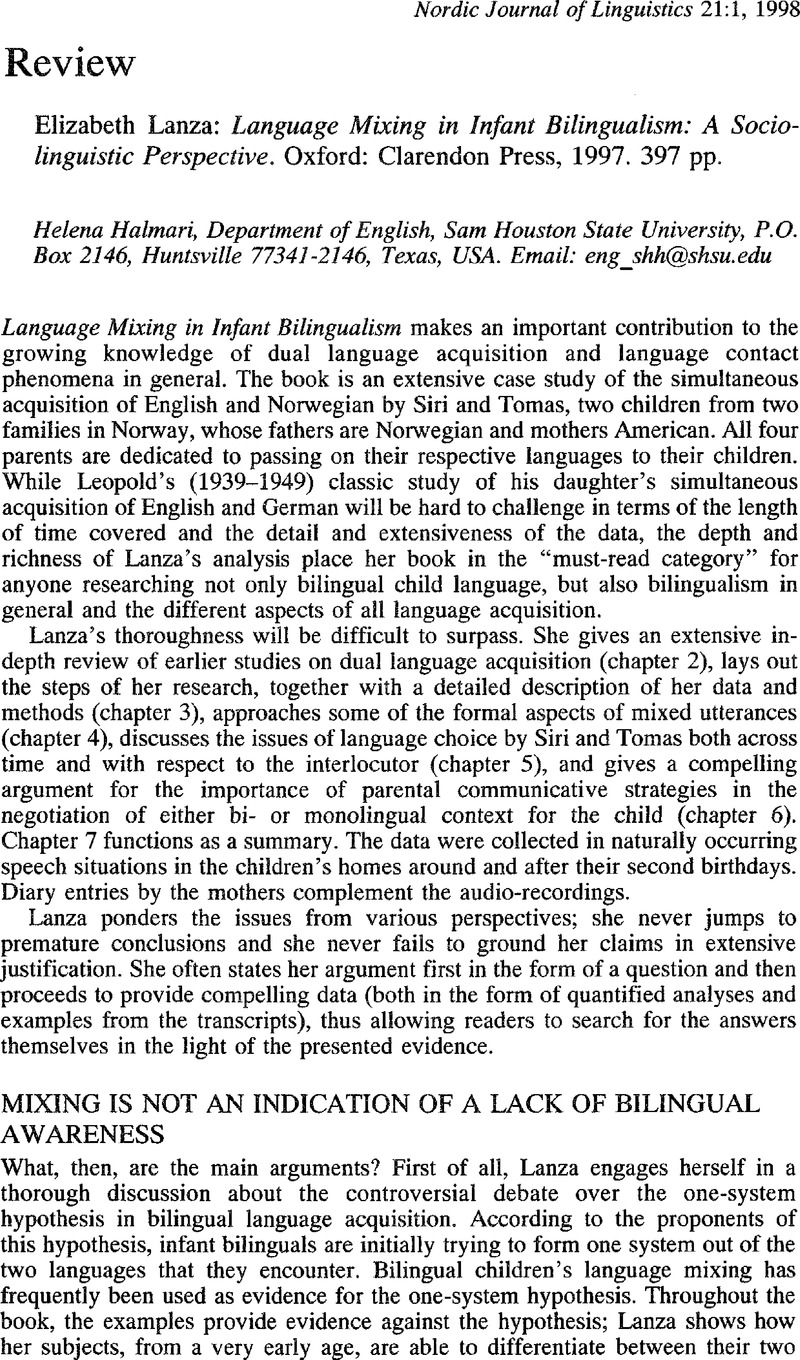Treffers-Daller, J. 1995. Code-switching between a Case-assigner and its Complement: The Case of Turkish-German Prepositional Phrases. In
Summer School Code-switching and Language Contact 14–17 September 1994, Ljouwert/Leeuwarden,
The Netherlands,
Fryske Akademy, pp.
253–
263.
Google Scholar 